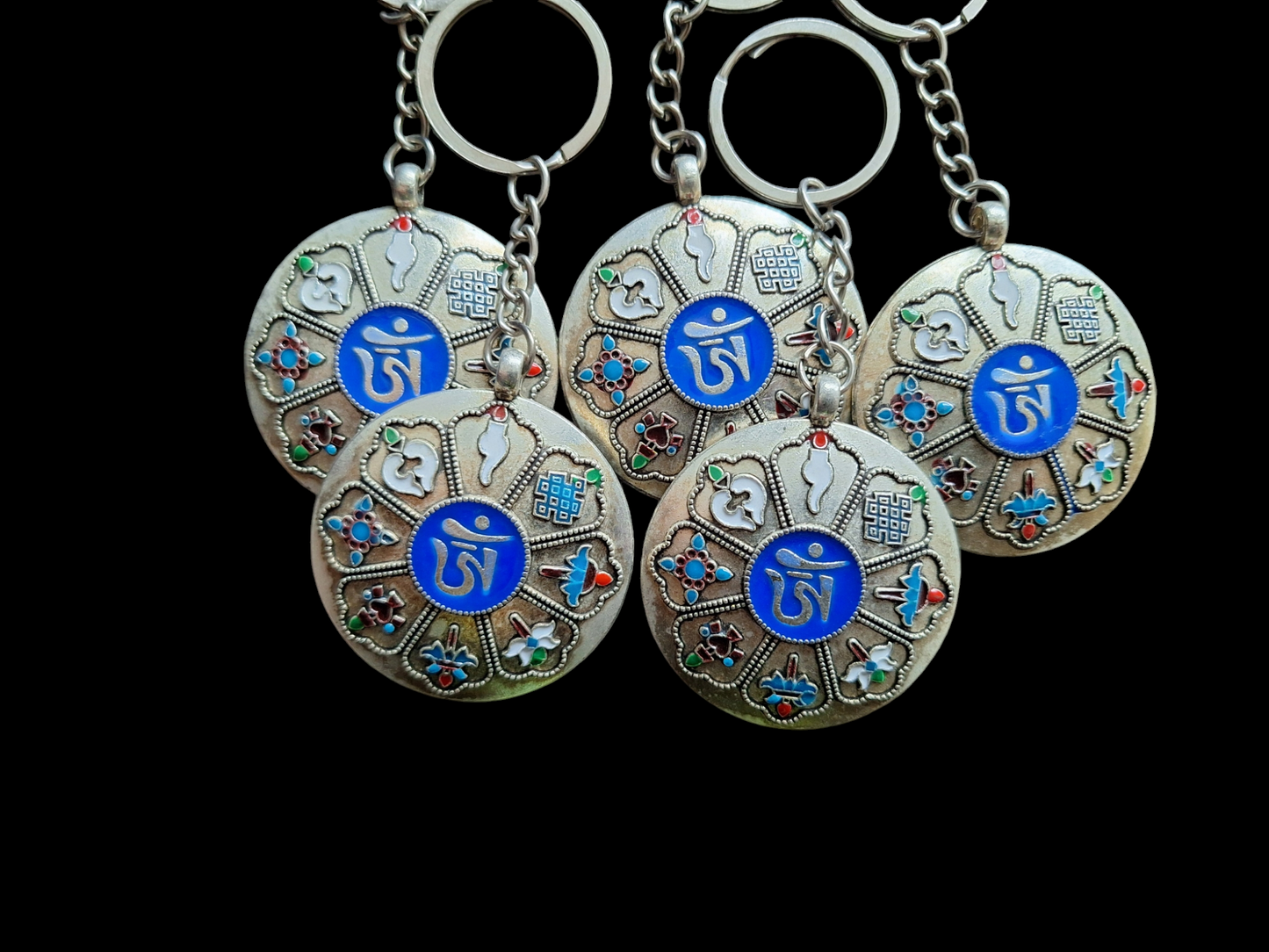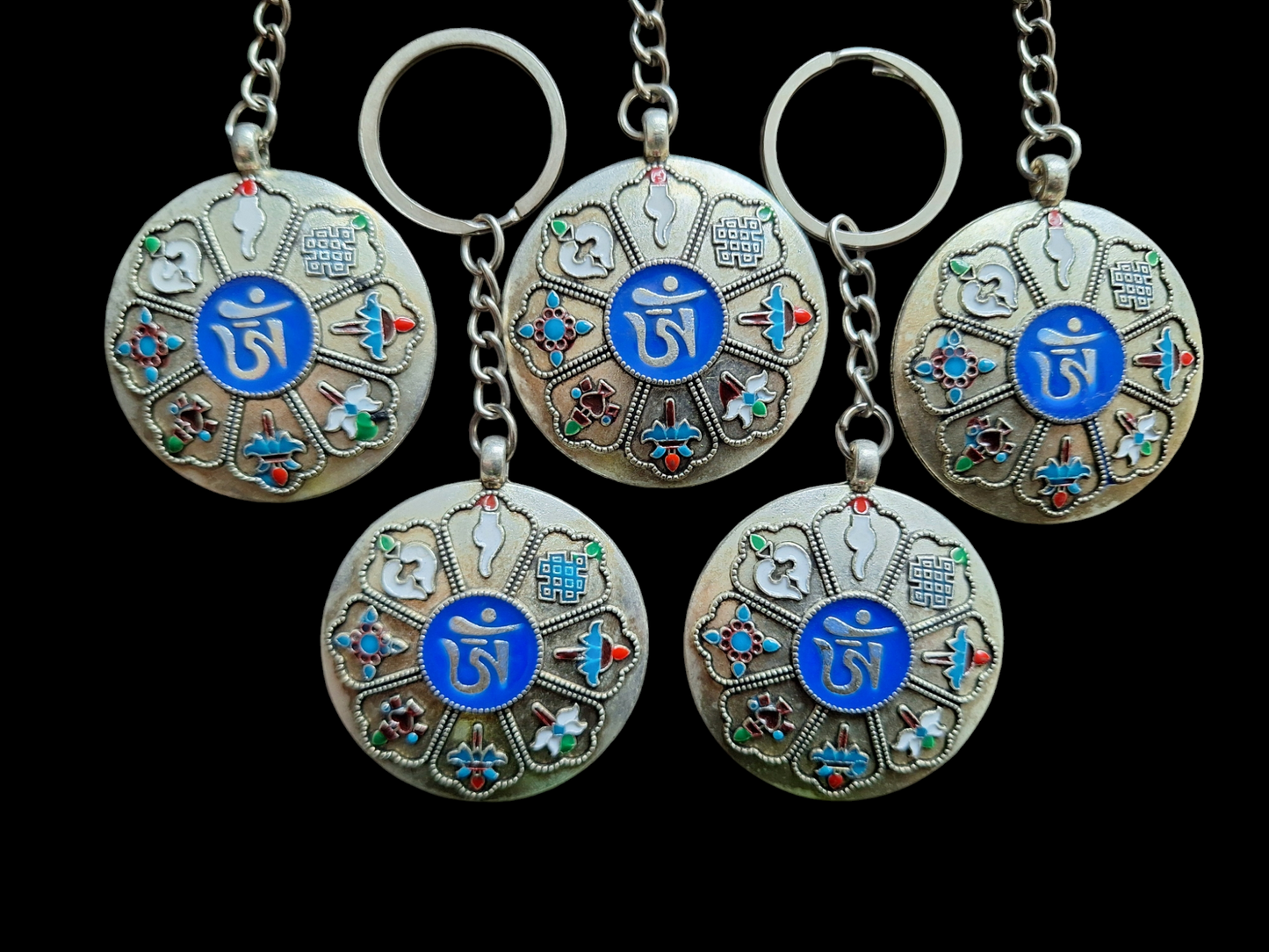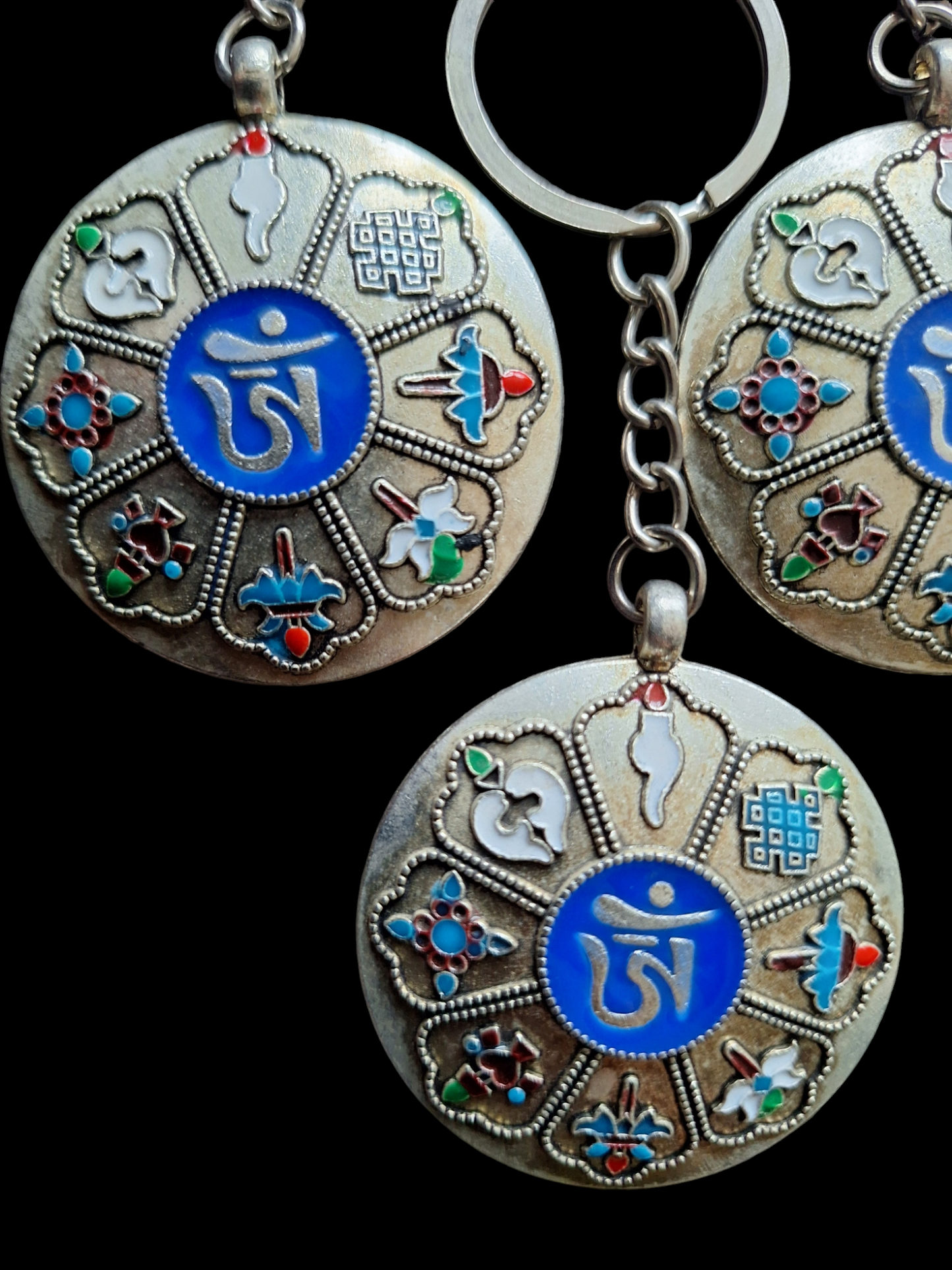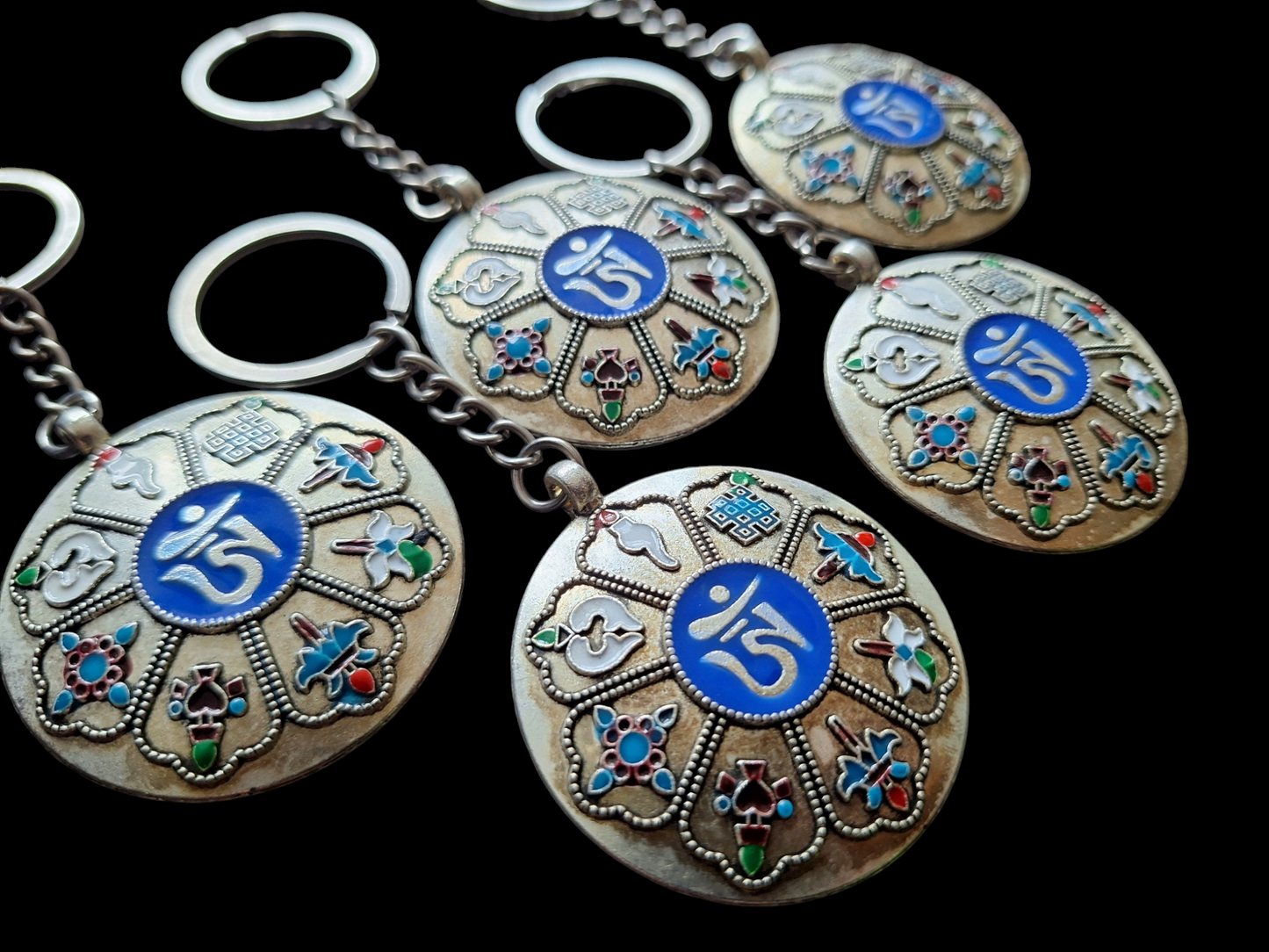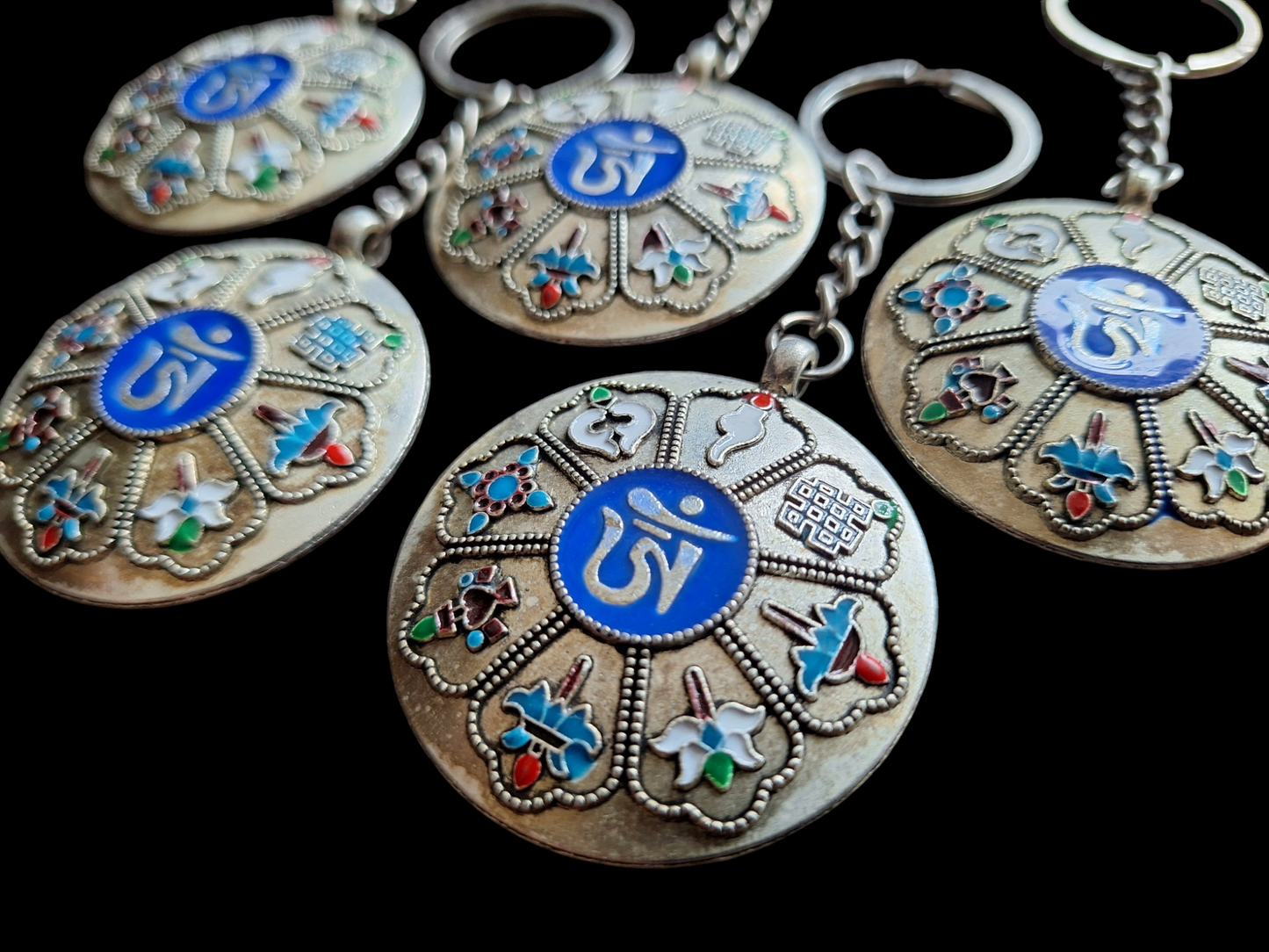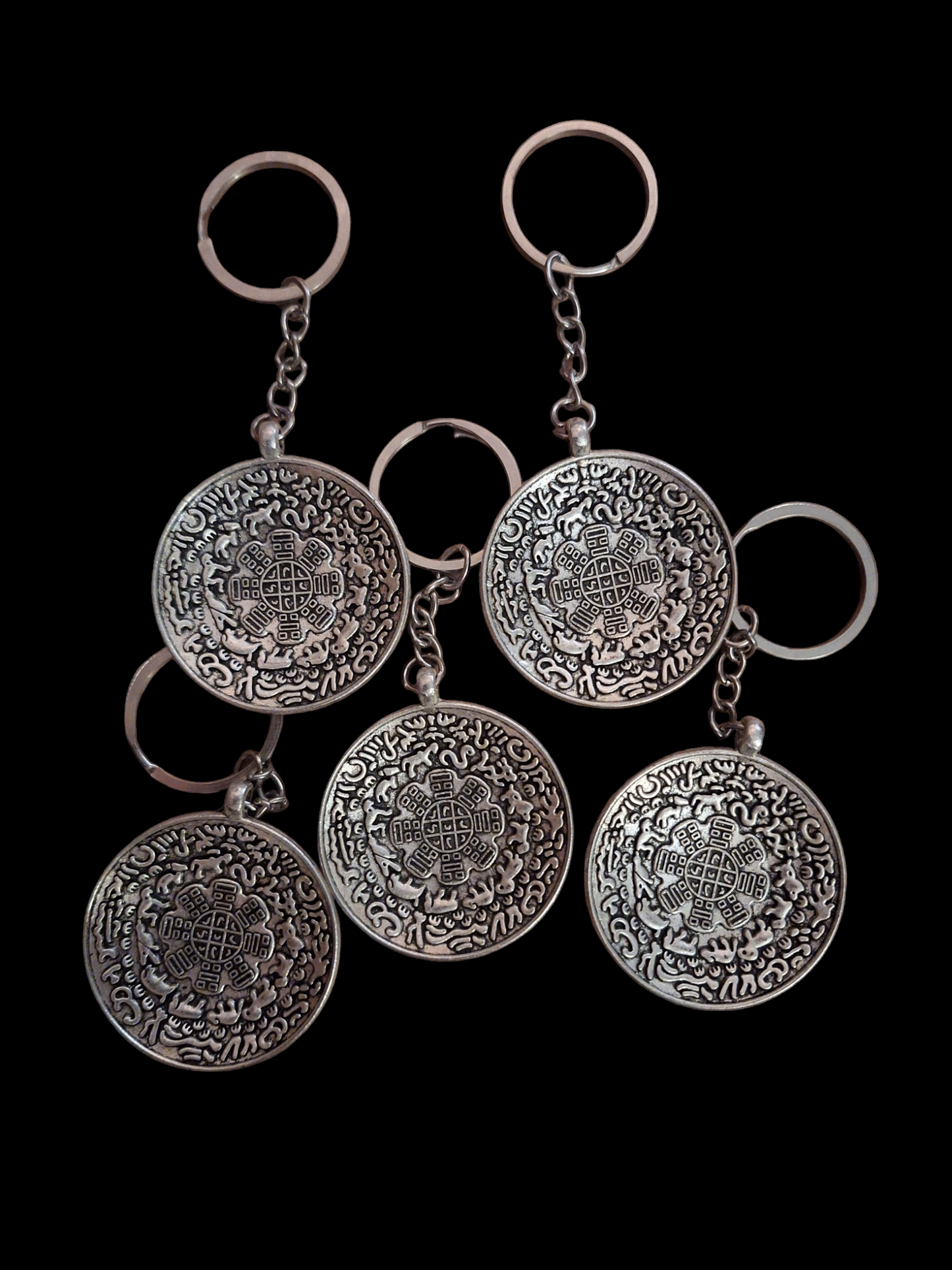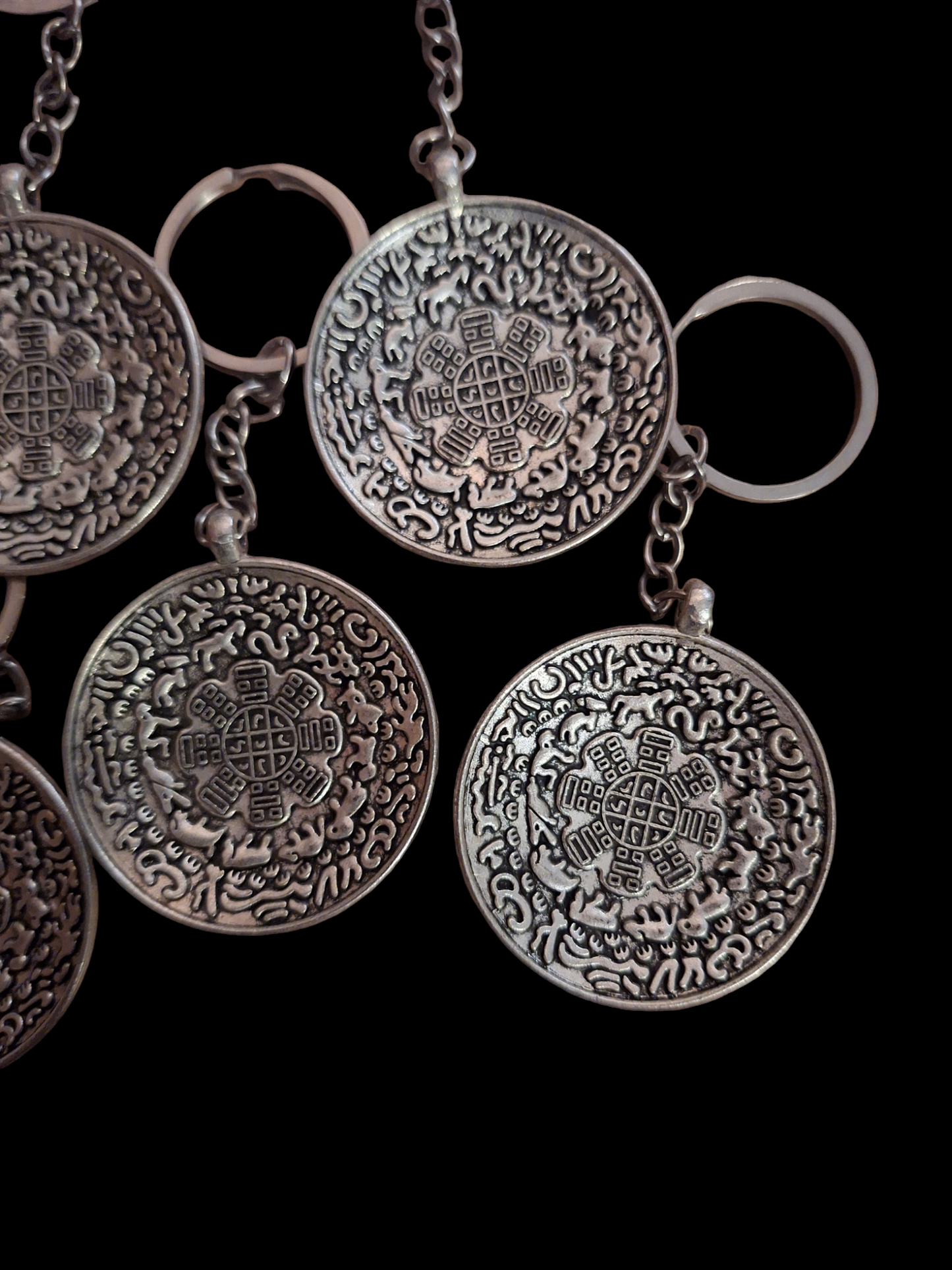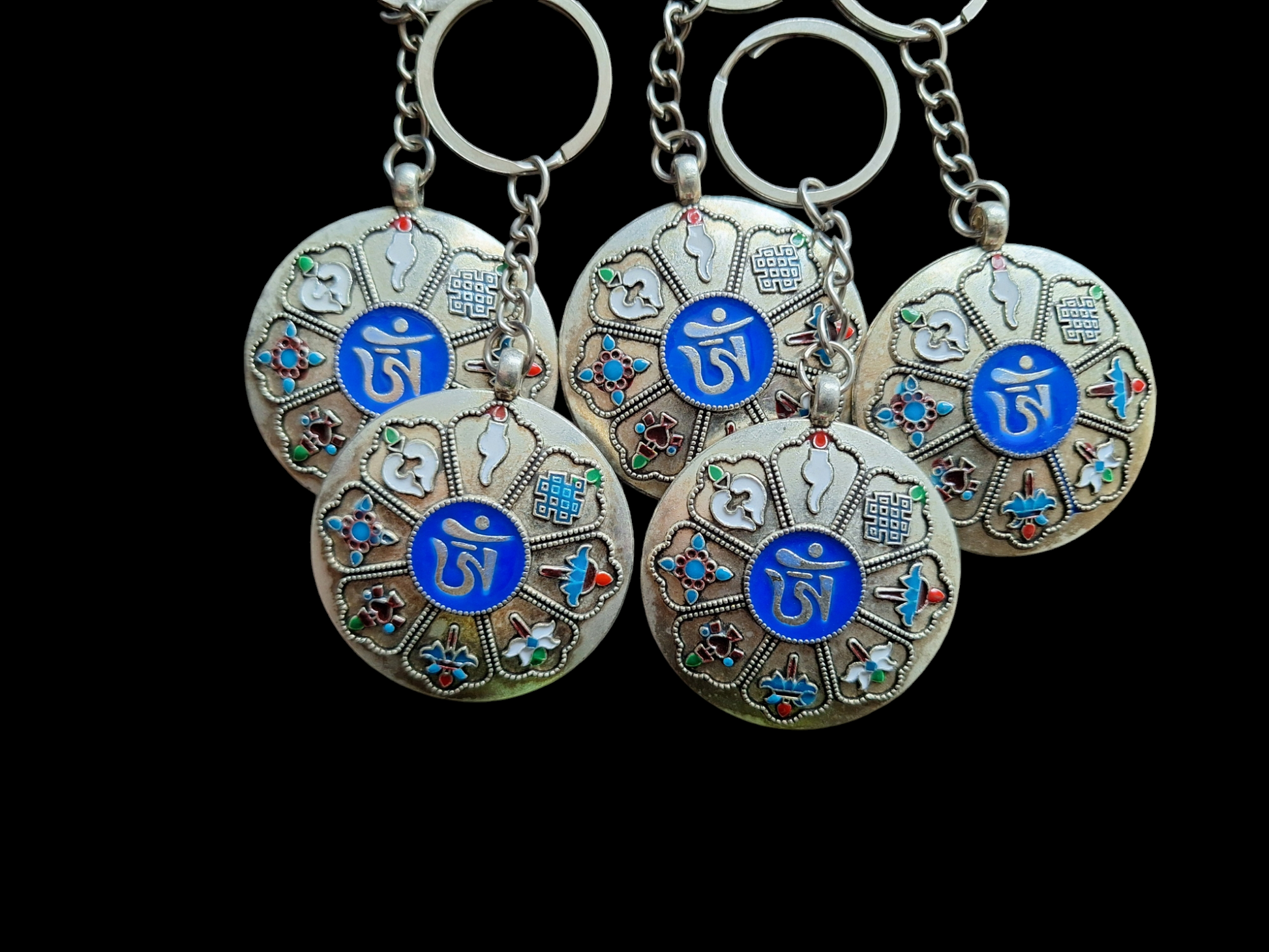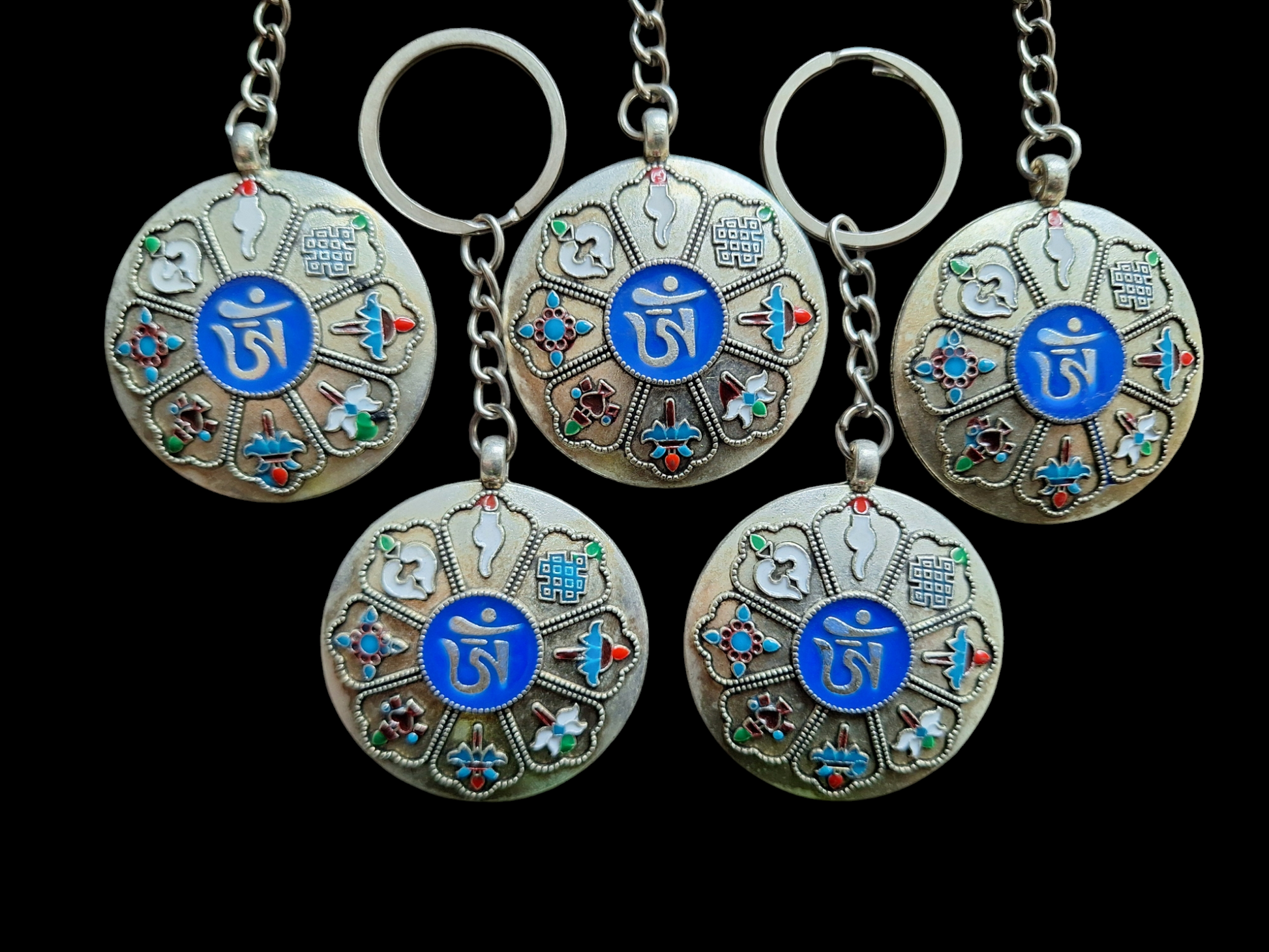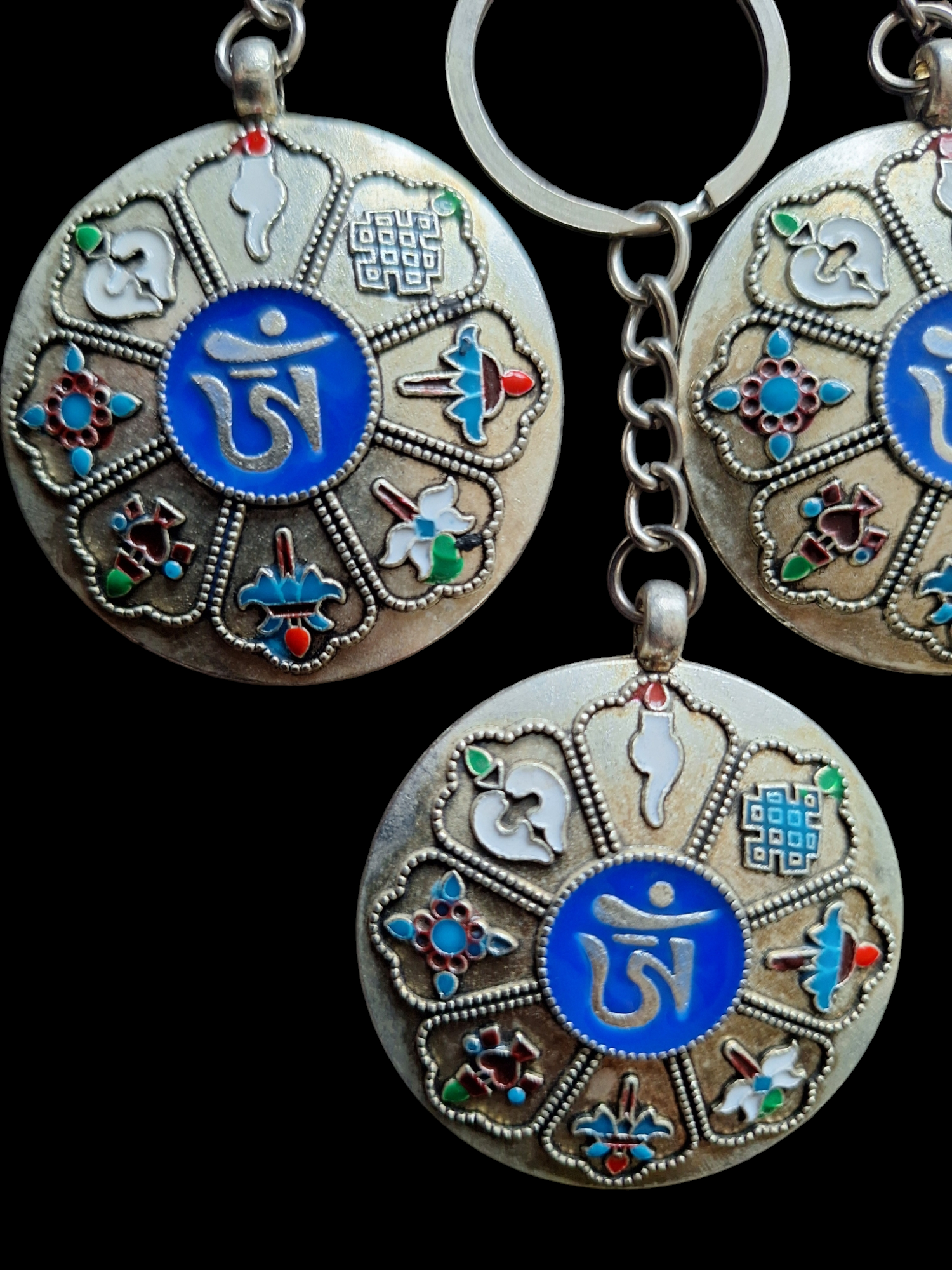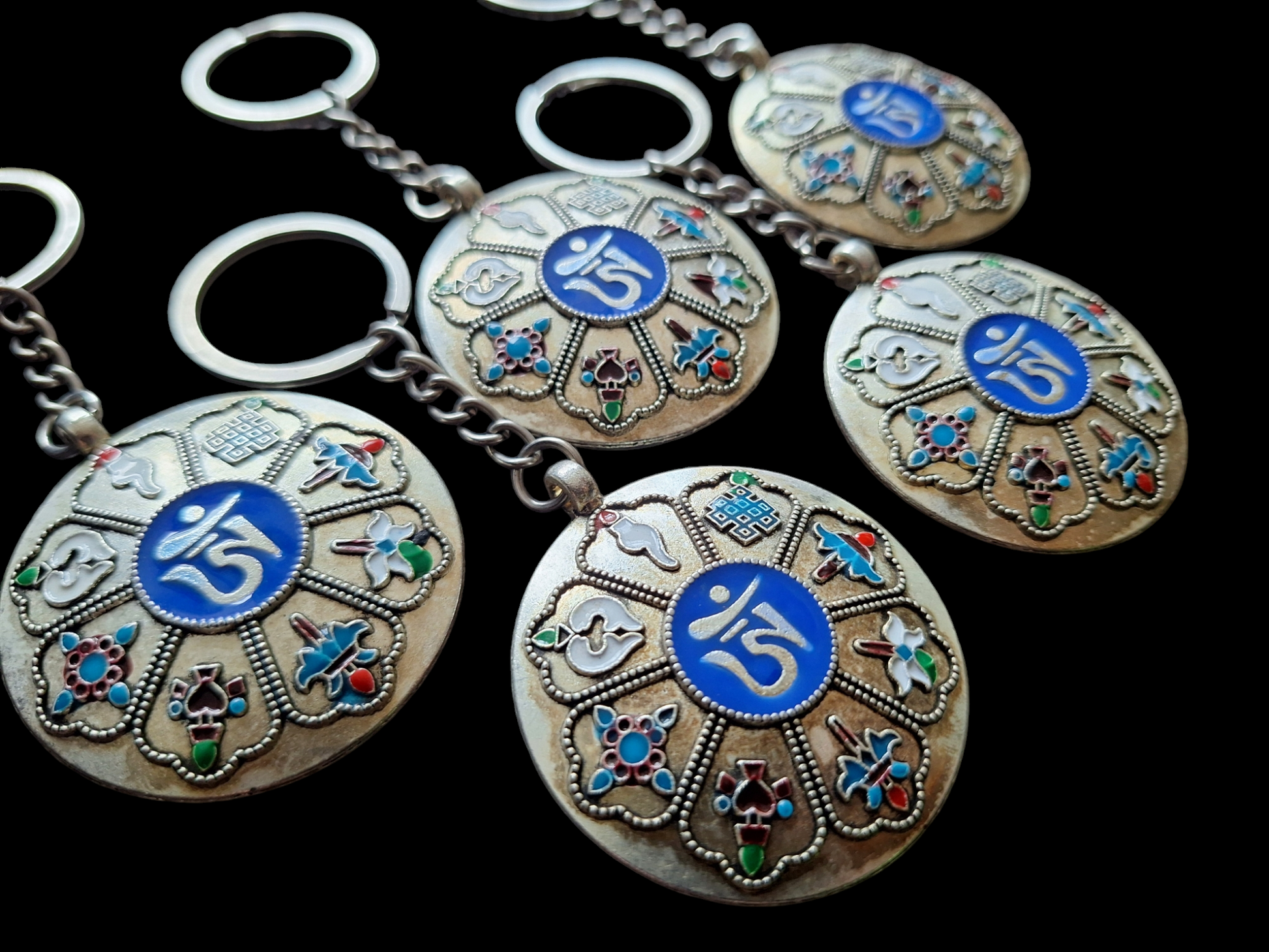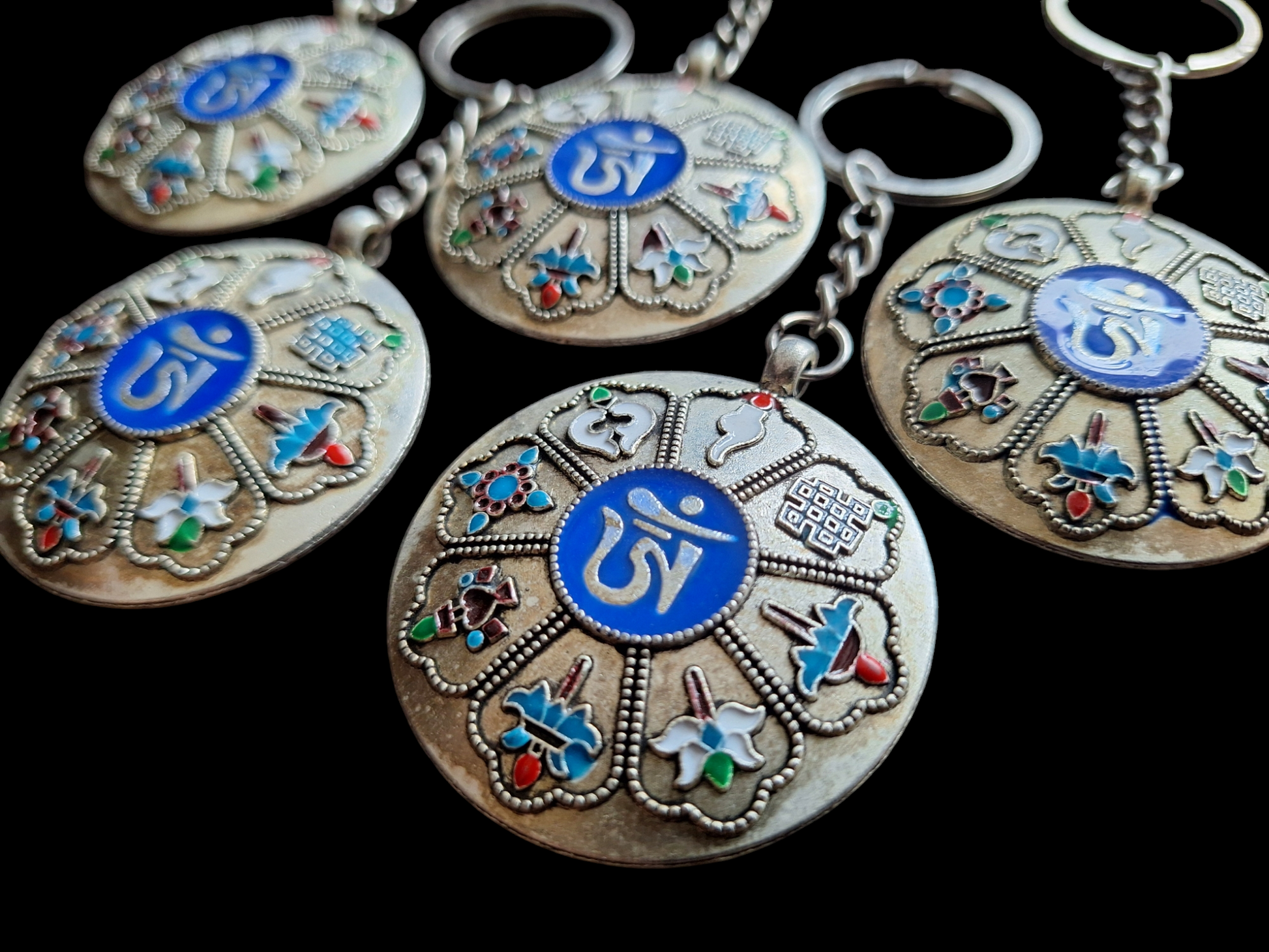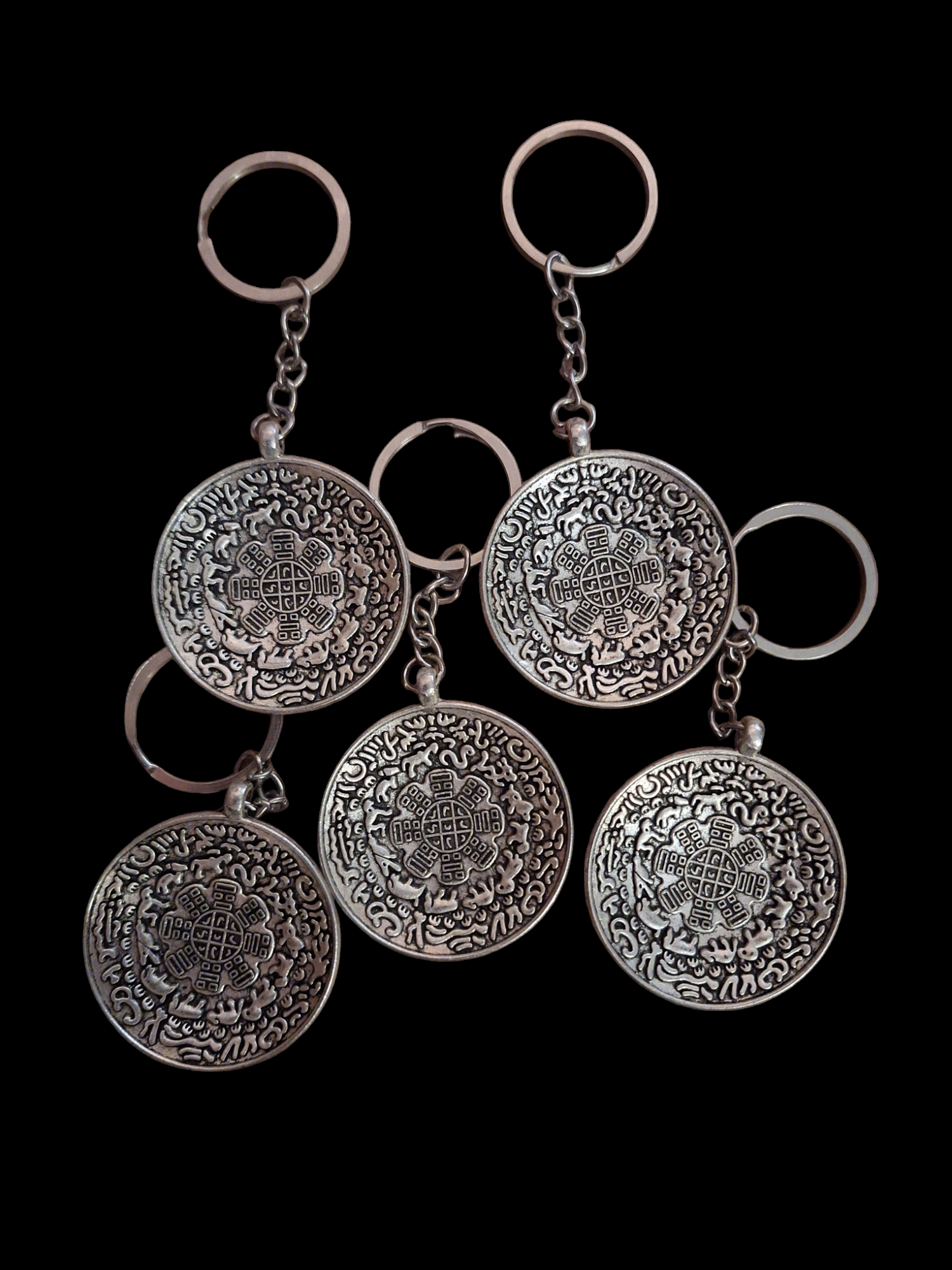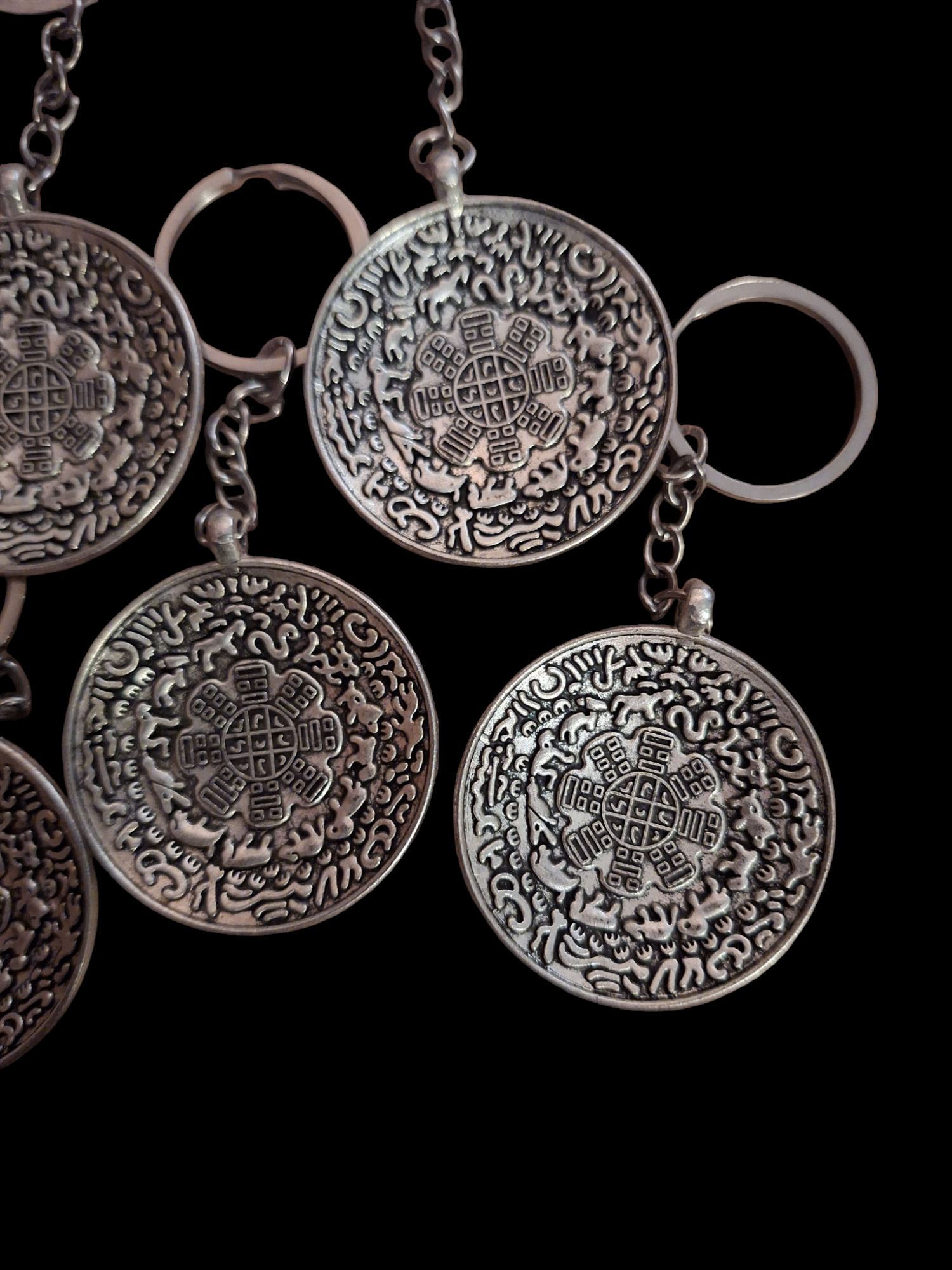Seawolf Shop
Keychain Auspicious Symbols with Lo Shu #2
Keychain Auspicious Symbols with Lo Shu #2
Couldn't load pickup availability
Share
Nepalese keychains from lightweight, silver-colored metal.
The frontside shows a colorful depiction of the Tibetan Buddhist 'Eight Auspicious Symbols', one of the oldest and most well-known groups of prosperity-symbols, consisting of: the Pair of Golden Fish, the Precious Parasol, the Vase of Treasures, the Lotus Flower, the Conch Shell, the Infinite Knot, the Wheel of Dharma, and the Banner of Victory.
In the center the symbol for the (mantra)word "Aum" can be seen. This symbol and its sound, when spoken as an individual seed mantra or as part of a bigger mantra is said to be the all encompassing cosmic vibration of the universe. It represents all times, all awareness of times and the overtaking of time itself. When recited, it activates and energizes all the chakra's.
The backside shows a depiction of the traditional Tibetan astrological system; the astrological chart of Si Pa Ho, consisting of three schematic images:
1) In the center the mystical square Me Wa Gu can be seen. In the 9 parts the numbers from 1 to 9 are inscribed, the sum of which in each column is 15. This scheme forms in Tibetan-Mongolian astrology a numerological indication of the relationship between a person and deities and spirits. Each digit governs the year, they replace each other in reverse order.
In China this mystical square has been known since 2200 BCE and is called 'Lo Shu' or Nine Halls diagram; it derives from ancient Chinese mathematical and divination traditions, such as the art of Taoist Geomancy. Nowadays it is also widely known as an important emblem in Feng Shui; the 9 parts (also called 'palaces') then represent the 8 directions of the compass plus the central position, with each part having its own energy.
2) In the ring around the square the 8 trigrams ('Ba Gua') of Par Ha Ge can be seen. The trigram symbols come from very ancient origin; they derive from symbols found on ancient Chinese divination bones dating back as long as 11th century BCE. A related version of bone oracle is still used today by Turkic and Mongolian people, and also in the lineage of Spirit of Wolf Shamanism; 'Kazhiki'.
Doubled trigrams form 64 hexagrams, which form the core of the I Ching, the Book of Changes.
Each trigram is a divinatory grapheme and represents different dynamics, energies, cardinal points, animals, seasons etc. In depictions such as on these keychains, where the 8 of them together form a circle, it symbolizes heavenly order, a healthy balance and right flow of energy.
3) In the outside circle the 12 animals from the Eastern zodiac can be seen.
These keychains have a diameter of 46 millimeters. They are sold per piece.
Instead of using them as keychains, they can of course also be taken off the chain and used as base for a personal amulet.
